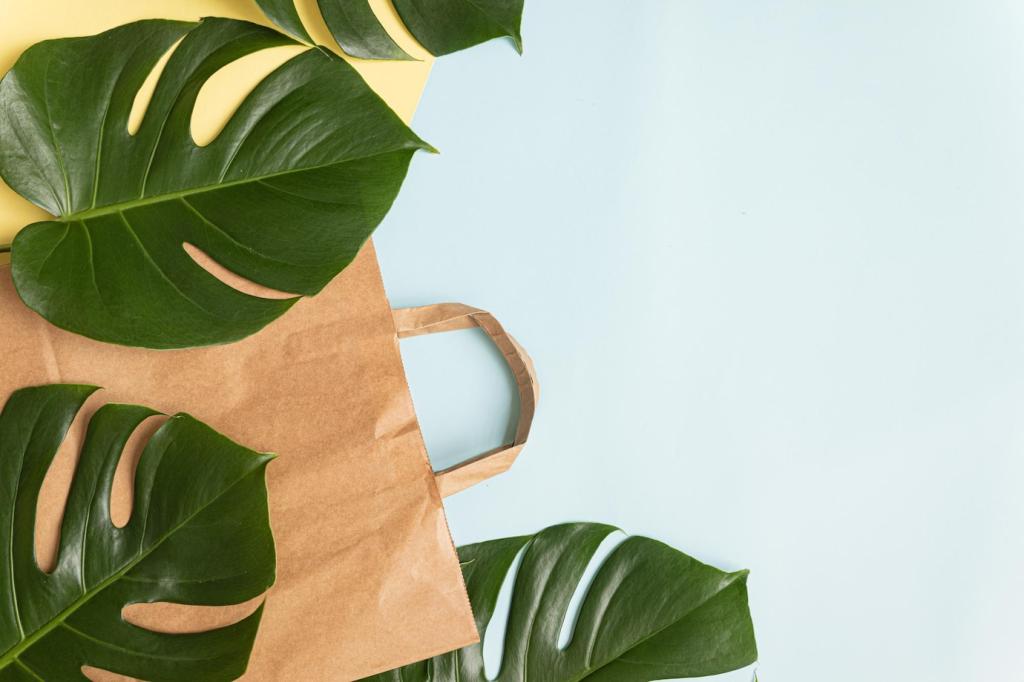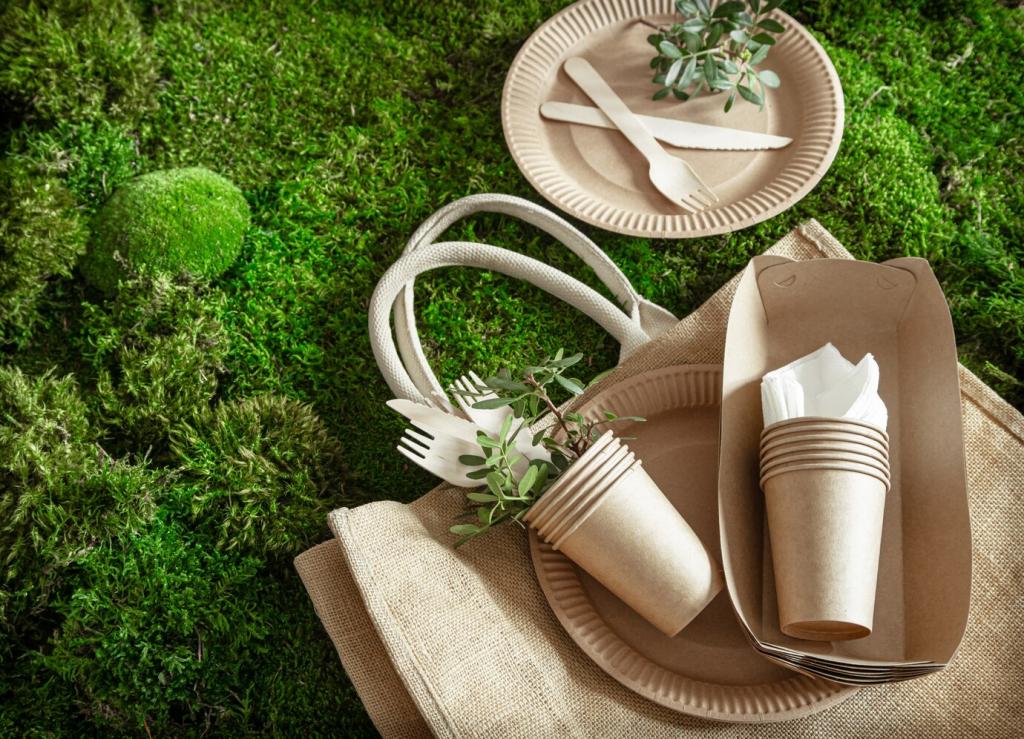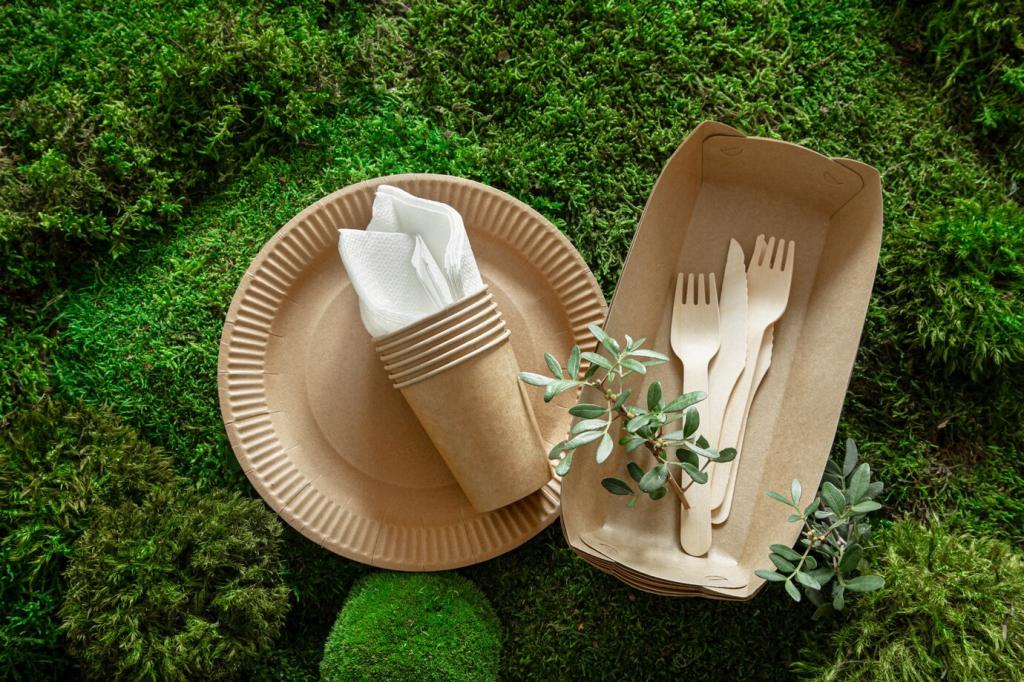Reusable Packaging: A Guide for Everyday Living
Start Here: Your Everyday Reusable Packaging Kit
Map Your Packaging Footprint
For one week, collect your disposables in a clear bag and sort them by moments: coffee, lunch, groceries, snacks, deliveries. Patterns pop fast. Then pick the top three items to replace first. Share your list in the comments, and we’ll suggest real-world swaps that match your routine and budget.
Assemble a Lightweight, Go-Anywhere Kit
Start with a foldable tote, a stainless steel container, a silicone bag, a compact utensil set, and a travel cup. Everything fits in a backpack or car door pocket. Keep duplicates by the front door so you never forget. Snap a photo of your kit and tag us—let’s inspire each other’s everyday wins.
The Seven-Day Swap Challenge
Day one: bring your cup. Day two: pack lunch. Day three: shop produce bag-free. Keep going, small and steady. We’ll email daily prompts if you subscribe, plus bonus scripts to use at cafes and counters. Post your progress, cheer on others, and make these seven days the start of a lasting habit.
Materials, Safety, and Care
Glass, Stainless, Silicone: When Each Shines
Glass is great for visibility and reheating, but heavy on the go. Stainless steel is tough, odor-resistant, and perfect for commute lunches. Silicone bags excel with snacks and marinades, sealing reliably. Mix and match to suit your day. Tell us which material you reach for most and why—it helps others fine-tune their kits.
Cleaning Without the Fuss
Rinse right away to prevent odors. Wash with warm water, mild soap, and a bottle brush; let lids dry fully before storage. Dishwashers work for most pieces—check manufacturer guidance. Batch-wash in full loads to save water and energy. Share your favorite quick-clean hack so the community can keep reusables fresh and ready.
Food Safety, Allergens, and Labels
Dedicate containers to specific uses if you manage allergens, and label them clearly. Avoid microwaving metal; vent lids when reheating glass. Replace worn silicone if it tears or stains deeply. Keep date labels on leftovers to prevent waste. Ask your questions in the thread—our readers love swapping real-life safety tips that reduce stress.
Shopping and Refilling with Confidence
01
Refill and Bulk Strategies
Bring pre-weighed jars or lightweight containers and note their tare on painter’s tape. Refill staples first—grains, nuts, coffee, soap—then expand to snacks and spices. If your store lacks a bulk section, ask about refills or package-free options. Comment with your city and we’ll crowdsource local refill-friendly spots together.
02
Scripts for Conversations with Staff
Try this: “Hi! May I have this filled in my clean container? The tare is written here.” Smile, be brief, and thank them. Most staff appreciate clarity. If policies block reusables, ask when managers review them. Share a quick success story—your confidence helps others feel ready to ask, too.
03
Labeling, Weighing, and Tracking
Use removable labels to mark tare, item, and date. Keep a tiny marker in your kit pocket. At home, create a shelf for refills so nothing hides and goes stale. Track your top five refills over a month and report back—seeing the numbers makes your progress real and motivating.
On-the-Go: Workdays, Travel, and Events
Place your cup beside your keys at night, and prep lunch while dinner cooks. Many cafes happily fill clean reusables; some even offer discounts. A reader, Maya, saved two cups daily and started a quiet trend at her office. What’s your nudge item? Share it so others can copy your trick.

Home Systems that Make Reuse Effortless
Store frequently used foods at eye level in clear jars with big labels. Keep an “almost empty” bin for refills so you never run out suddenly. Batch-cook and portion into stackable containers. Post your shelf snapshots and label ideas—seeing other layouts sparks clever solutions you can copy tomorrow.


Home Systems that Make Reuse Effortless
Refill shampoo, soap, and detergent at local stations, or buy concentrates that pair with durable bottles. A simple drip tray keeps the sink tidy. Put a small laundry bag near the kitchen for used cloths and napkins. Tell us which bathroom swap surprised you most—we love those pleasant, practical wins.
Impact, Costs, and Community Momentum
Waste and Carbon, Plainly Explained
Reusables use resources upfront but pay back through repeated use. Washing in full loads, air-drying, and cold-water cycles lower impacts further. Even modest habits—like a daily cup and lunch container—can prevent hundreds of disposables yearly. What’s your estimate so far? Share your weekly tally to motivate newcomers.
Budget Wins and Break-Even Moments
A sturdy bottle, cup, and lunch box often pay for themselves within months through discounts and fewer impulse buys. Track your reimbursements, skipped takeout extras, and grocery savings from buying in bulk. Drop your break-even story in the comments—real numbers make the switch feel attainable for everyone.
Join the Movement: Local Programs and Challenges
Look for cup-share schemes, deposit-return containers, and library-style jar swaps. If your city lacks them, start small: a workplace mug bank or neighborhood refill map. Subscribe for templates and monthly challenges, and tag us when you launch—your project might be the spark that makes reuse the new normal.
